 Petzlover
Petzlover Persian is originated from Iran but Tiger Cat is originated from United States. Both Persian and Tiger Cat are having almost same weight. Persian may live 8 years less than Tiger Cat. Both Persian and Tiger Cat has same litter size. Both Persian and Tiger Cat requires Moderate Maintenance.
Persian is originated from Iran but Tiger Cat is originated from United States. Both Persian and Tiger Cat are having almost same weight. Persian may live 8 years less than Tiger Cat. Both Persian and Tiger Cat has same litter size. Both Persian and Tiger Cat requires Moderate Maintenance.
 Cat lovers the world over know the Persian cat very well. It's a beautiful long-haired cat breed with its familiar round face and blunt muzzle.
Cat lovers the world over know the Persian cat very well. It's a beautiful long-haired cat breed with its familiar round face and blunt muzzle.
It is not really known when long-haired cats first appeared, or where the Persian originated but their history stems from Persia or Iran as it is known today, where it seems they were first sighted.
The cats were grey-coated and some were white and soon the cats arrived in Britain. They were introduced to the United States in the 1900s. The cat was developed first by the English, and then also by American breeders after the Second World War and the breeding of these cats has also meant a lot of coat colors.
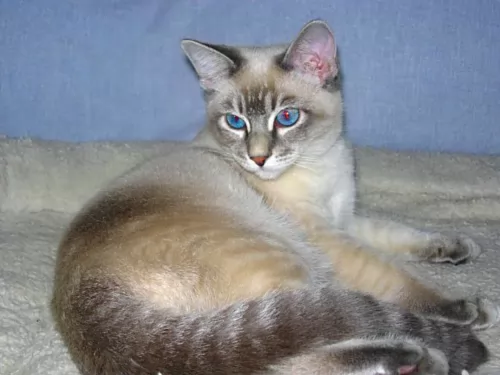 The Tiger cat isn’t actually one breed as such, as it certainly isn’t a combination cat from a mating between a Tiger and a domestic cat as that is just plain impossible.
The Tiger cat isn’t actually one breed as such, as it certainly isn’t a combination cat from a mating between a Tiger and a domestic cat as that is just plain impossible.
Tiger cats are simply certain cat breeds that have patterns that make them look similar to the big, wild Tiger of India.
It is thought that striped tabby cats are Tiger cats. Tabby cats are often called Tiger cats because of their striped fur pattern. These tabby cats aren’t a breed either but rather a cat with a certain pattern.
The Tiger Cat can actually be any of a pure-bred cat breeds you get and this could be American Shorthairs, American Bobtails and Maine Coon cats.
 The Persian cat is a medium- to large-sized cat and is heavily boned. He can weigh between 3 and 6kg.
The Persian cat is a medium- to large-sized cat and is heavily boned. He can weigh between 3 and 6kg.
He has stocky legs, a thick neck, small ears, round head, round eyes, and the face is flat or blunt. The kittens are gorgeous balls of fluff.
The coat of the Persian is thick, long, and silky. People many times think only of a white Persian, when in fact the cat comes in many colors and patterns. Eye color for the cat can be blue, green, brown, copper or even odd-eyed.
The Persian isn’t the most active of cats, so attention will need to be given to exercising the cat so as to manage his weight. This cat will also need to have his nutrition controlled to stay in shape and in good health.
Persians enjoy games with their human family and will need some toys to encourage play and exercise.
He is placid and calm but that doesn’t mean he can’t have bursts of energy. They’re quieter than other cats, are sweet-natured, preferring to live in quieter, less boisterous households.
They aren’t loudly vocal but communicate with their eyes and their soft voices. They won’t get on well with small, noisy children but can be loving pets and companions of older children who allow them their own space.
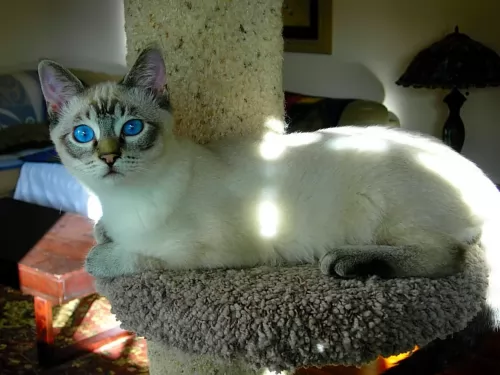 Just some of the cats out there that look like Tiger cats are the Bengal, the Savannah cat, the Toyger, Bombay, and Abyssinian.
Just some of the cats out there that look like Tiger cats are the Bengal, the Savannah cat, the Toyger, Bombay, and Abyssinian.
Some of these cats are larger than the others. The Toyger is the perfect example of these domesticated Tiger-like cats. It’s a cat that is a mix between a Bengal and an ordinary cat from India.
They can be fairly large these cats and weigh anything between 4 and 7kg, possibly more. It looks like a Tiger – the whole purpose of breeding them in the first place.
The coat is short and thick with orange and gold tones and black stripes. They come in in red, brown, or grey shades but the coat is always striped.
Because tiger cats are actually tiger-striped tabbies, they come with the typical Tabby cat personality.
Sometimes they can be aloof and mysterious but most times they are social and friendly. They thrive on the attention they get from their human family,
 The amicable personality of the Persian cat makes it easy to have these cats in your home. The long hair becomes a bit of an issue as the cat sheds quite a bit.
The amicable personality of the Persian cat makes it easy to have these cats in your home. The long hair becomes a bit of an issue as the cat sheds quite a bit.
They’re sweet, quiet cats and they don’t demand attention from you. They are more than happy just lying quietly in a warm spot. They are calm, loving cats and it's no wonder that they are still such a popular breed of cat.
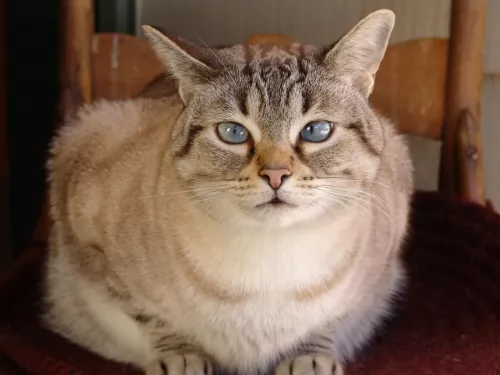 The Tiger cat, just like any other cat, wants to have a good home where he is loved and cared for. Because the Tiger cat is describing a coat and not an actual cat breed, the Tiger cat can come with many different kinds of personalities. He can be lively and vocal or quiet and shy. Many pets turn out with personalities similar to their owners.
The Tiger cat, just like any other cat, wants to have a good home where he is loved and cared for. Because the Tiger cat is describing a coat and not an actual cat breed, the Tiger cat can come with many different kinds of personalities. He can be lively and vocal or quiet and shy. Many pets turn out with personalities similar to their owners.
If you decide to take in a Tiger cat, it is your duty as a responsible pet owner to ensure his wellbeing and happiness.
 The structure of this cat’s head can mean some health problems. Hereditary Polycystic kidney disease is prevalent with the Persian cat. It is an inherited condition that causes cysts to form in the kidneys. These cysts are actually present from birth, growing larger over time and interfering with kidney function and ending in kidney failure.
The structure of this cat’s head can mean some health problems. Hereditary Polycystic kidney disease is prevalent with the Persian cat. It is an inherited condition that causes cysts to form in the kidneys. These cysts are actually present from birth, growing larger over time and interfering with kidney function and ending in kidney failure.
Also, with a larger breed cat such as the Persian, hip dysplasia is a problem.
Persians are also susceptible to malocclusion which means ‘incorrect bite’. This particular condition can affect the cat’s ability to grasp and actually hold food. So much so in fact, that now pet food manufacturing companies have even developed specially-shaped kibble to cater particularly for the Persian.
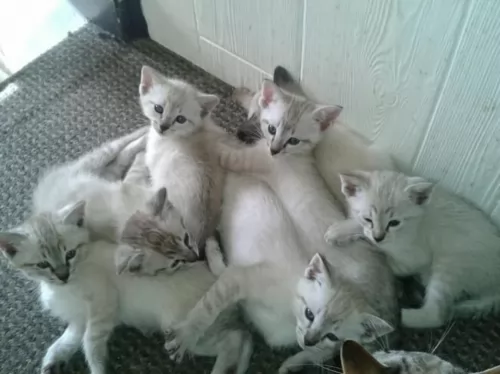 As a pet owner, you have to be able to recognize the signs of an animal that is sick. If your cat persists with his problems, you will need to get him to the vet so that the vet can conduct a careful examination to get to the root of the problem.
As a pet owner, you have to be able to recognize the signs of an animal that is sick. If your cat persists with his problems, you will need to get him to the vet so that the vet can conduct a careful examination to get to the root of the problem.
Did you know there are several cat vaccinations your cat must have to avoid some of the deadly cat diseases there are?
Some of the common cat diseases to look out for are diabetes, hyperthyroidism, bladder infection and eye problems.
 The Persian cat’s coat is long and silky and because he is a fairly heavy shedder, he will require regular brushing – certainly once or twice a week to get rid of that loose hair. It is important to brush and also cut the hair so as to get rid of the tangled knots that form.
The Persian cat’s coat is long and silky and because he is a fairly heavy shedder, he will require regular brushing – certainly once or twice a week to get rid of that loose hair. It is important to brush and also cut the hair so as to get rid of the tangled knots that form.
While brushing your Persian, make sure that his eyes and nose are clear. This is important because the flat face creates problems with these cats.
Excellent cat food for your Persian involves reading labels and understanding what brands are best for your beautiful cat. The Persian cat is a carnivore and will require high-quality food rich in protein.
Speak to your vet if you are in any doubt about the best food for your cat’s health and wellbeing. Make sure your pet has a constant supply of fresh, cool water.
Make sure to keep the litter box clean. Buy a small rake from the pet shop and rake up your cat's feces every single day and dispose of them.
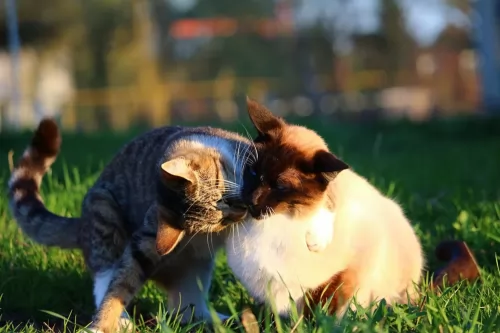 Cats are fairly easy pets to care for and they are able to adapt to different lifestyles and environments too.
Cats are fairly easy pets to care for and they are able to adapt to different lifestyles and environments too.
Before you bring a cat into your home, make sure that you have everything ready to welcome your pet. These are things such as food and water bowls, a soft bed, litter box, toys, a brush, scratching post as well as other cat accessories to make his life comfortable.